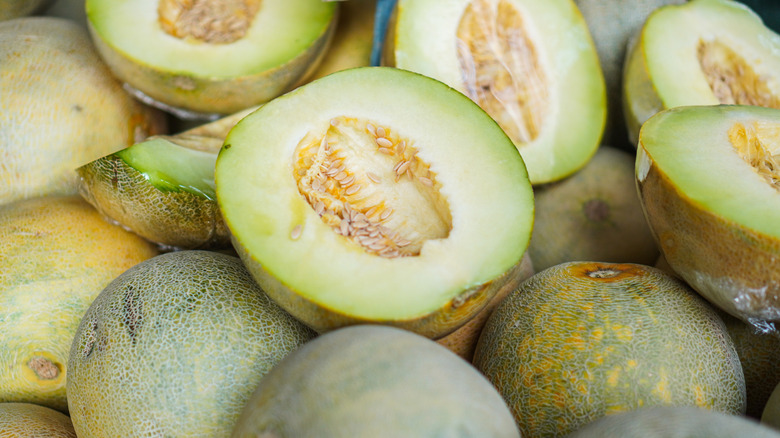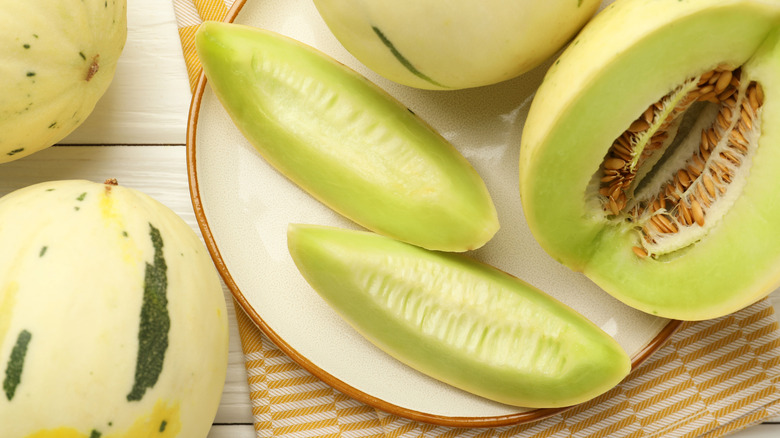The Easy Way To Tell If A Honeydew Is Ripe
Among the melon family, honeydew can be the most misunderstood. Some even consider it nature's most mediocre melon, popping up in fruit salad cups like an uninvited guest. Unlike its showier cousin cantaloupe, with its sweet aroma and heavily netted skin, a honeydew keeps its secrets close to the vest. Its smooth, waxy rind doesn't give away much, and it doesn't perfume the room the way a ripe peach or mango might. But if you know what to look for, a ripe honeydew is absolutely within reach. Of course, while they are available all year round, you'll first want to shop seasonally for the best melon experience; honeydews are in season from June through October.
The 'dew's color is your first cue. A ripe honeydew should have a creamy, pale yellow or golden hue, but never bright green. Those minty green orbs you see in many grocery bins are the mark of a melon picked too soon. While immature honeydews can soften after harvest, they won't reach their full sugar potential once off the vine. So you'll want to choose one that already shows signs of maturity. The rind should also have a subtle matte finish, not a glossy or shiny surface.
Like all good melons, a ripe honeydew should feel heavy for its size, which signals juice content and ripeness. Density is a good thing here; it means the flesh has developed and the sugars are concentrated. Just like when you're selecting ripe watermelons, honeydew should reveal a hollow sound when thumped.
How to store honeydew for the best taste and texture
Another reliable method to check the ripeness of honeydew is to gently press your thumb against the stem end. On a ripe melon, you should feel a slight give, like pressing into a room-temperature stick of butter. Not soft, not mushy, just a gentle yield. If it's rock hard, it's underripe. If it feels spongy, it's likely overripe or already fermenting inside.
If you find a honeydew that's nearly ripe but still firm, leave it on the counter for a couple of days. Check the blossom end periodically to see if it softens slightly. Once it reaches the point of readiness, move it to the refrigerator to preserve its texture and flavor. Once cut, honeydew should be stored in an airtight container in the fridge and eaten within three to five days. The texture deteriorates quickly once exposed to air, and the sugars can begin to ferment.
While it's a tragic truth that there are many honeydew haters out there, this leaves more for the real fans. Yes, it's not as overtly sweet as cantaloupe, but it's more refreshing. When perfectly chosen, it offers crisp, juicy flesh and an understated sweetness. And even if you picked a less-than-perfect melon, you can still make this delightful crunchy honeydew salad. But if you insist on calling honeydew the "packing peanuts of the fruit bowl" like comedian Jim Gaffigan (via X), you've got plenty of company. When it comes to all the different types of summer melons, you "dew" you.

